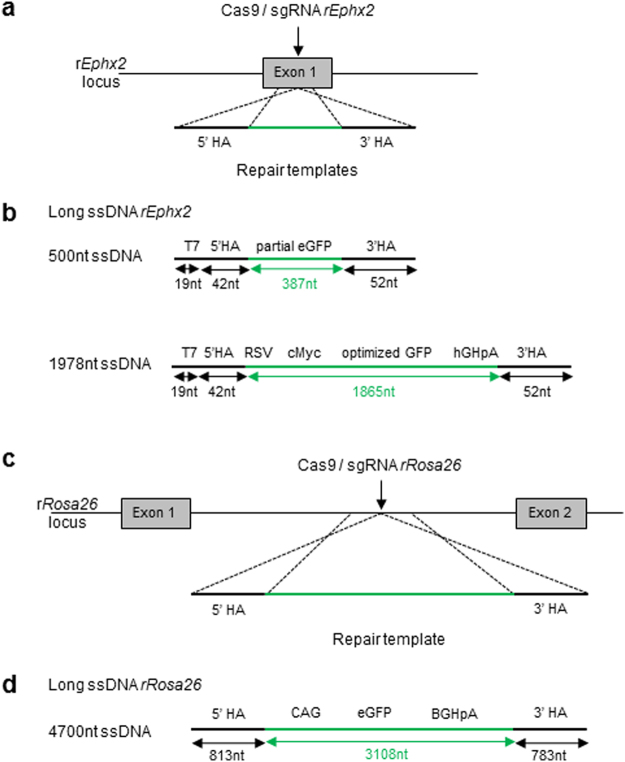Figure 3.
CRISPR/Cas9 mediated HDR strategies using long ssDNA templates. (a) Schematic illustration of the rat Ephx2 locus with the site of CRISPRs/Cas9 cleavage (arrow) and DNA repair templates containing a DNA sequence detailed in (b) and two homology arms (5′HA and 3′ HA) contiguous to the cleavage point. (b) Strategies tested into Ephx2 locus include a 500 nt (upper diagram) or a 1978 nt long ssDNA lower diagram), containing respectively a partial GFP sequence (387 nt) or a RSV-GFP-polyA expression cassette (1865 nt) and two homology arms (42 nt in 5′ and 52 nt in 3′). (c) Schematic illustration of the rat Rosa26 locus with the site of CRISPRs/Cas9 action (arrow) and DNA repair templates containing a DNA sequence detailed in (d) and two homology arms (5′HA and 3′ HA) contiguous to the cleavage point. (d) Strategy tested into Rosa26 locus includes a 4700 nt long ssDNA, containing a CAG-GFP expression cassette (3108 nt) and two homology arms (5′HA 813 nt and 3′ HA 783 nt).

